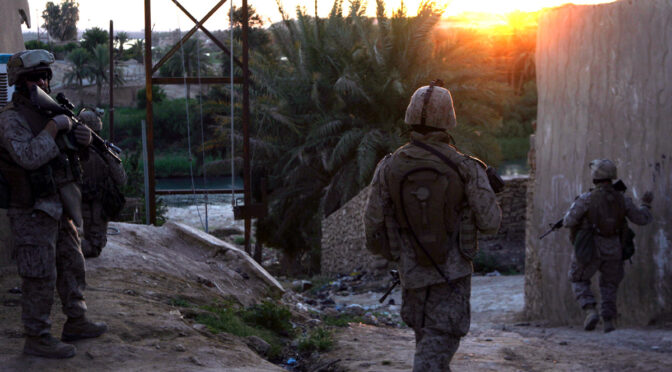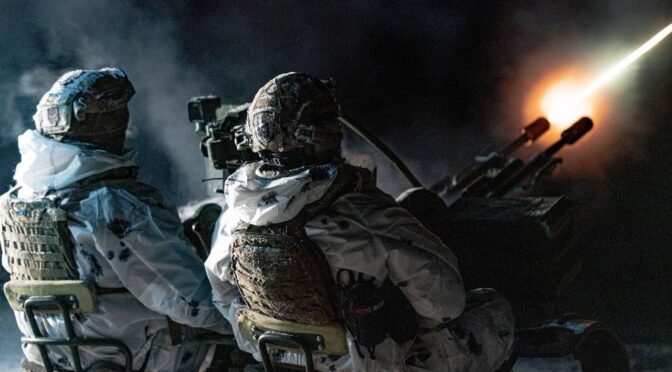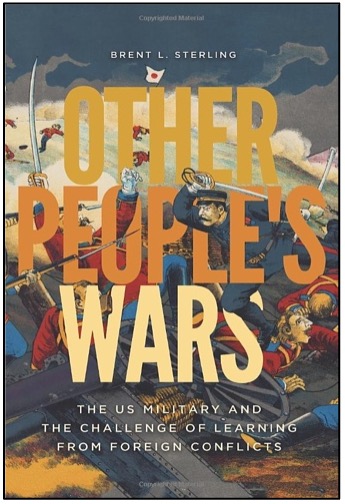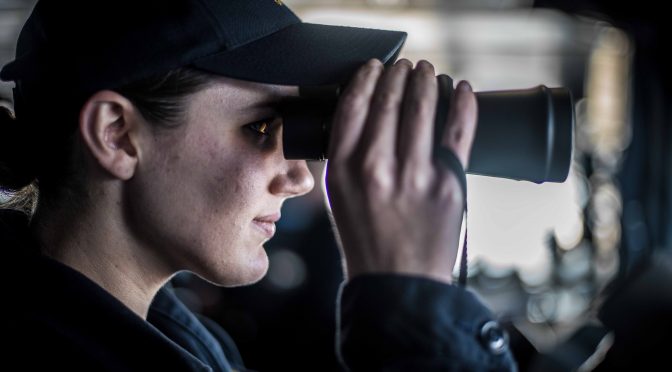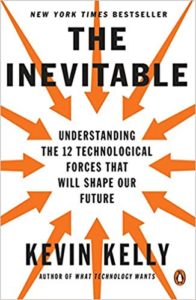By the CIMSEC Team
Happy holidays shipmates! The CIMSEC team has once again put our heads together for what is our fourth annual Holiday Reading List. Below you will find a selection of books we have read and enjoyed over the past year and some that we plan on enjoying in the future (and that we think you might enjoy, too). And of course, we have noted when recommended authors have been interviewed by CIMSEC and come on the Sea Control Podcast to talk about their work. So whether you need to find a book for that special navalist in your life, or if you need something to read on the beach with your toes in the sand, or curled up by the fire – we have got you covered. Enjoy, and happy holidays from the CIMSEC team to all our readers and listeners!
Brendan Costello
Sea Control Associate Producer
The Admirals by Walter R. Borneman
Borneman masterfully reviews the naval careers of all four of the U.S. Navy’s Fleet Admirals – Nimitz, Halsey, Leahy, and King – from their humble beginnings in Annapolis to the height of the Second World War, and their instrumental roles therein. Alongside illustrating their influence in the Pacific theater, Borneman simultaneously conveys each admiral’s personal leadership style and mutual interactions that portray their very human flaws and strengths. The Admirals is an intriguing look at the human component of leadership and some of the United States’ greatest military leaders in its greatest moment of crisis.
The Chinese Invasion Threat by Ian Easton
The Chinese Invasion Threat analyzes the military and political factors of a cross-strait amphibious invasion of Taiwan. Most analysis from the U.S. perspective on a cross-strait conflict emphasizes countering PLA operations in the Western Pacific and largely undervalues the island and its immediate waters. Easton’s analysis not only provides a unique perspective on the strategic importance of Taiwan to a growing discourse on intelligence analysis, but is infused with the author’s cultural, social, and geographic understanding gleaned from years of study and life on the island. For anyone interested in the Indo-Pacific, especially those of the amphibious variety, this is a must-read.
Chip War by Chris Miller
Miller reviews the humble beginnings of the semiconductor, the intricacies of semiconductor design and production, and the microchip’s current and future significance. He seamlessly blends the economic and geopolitical motivations and challenges of every major stakeholder in the industry, revealing that the future of American military dominance, and China’s, hinges on tiny, nano-meter-thick slabs of silicon. If you want to understand the importance of East Asia to American technological development and foreign policy, this is a great place to start.
Dmitry Filipoff
Director of Online Content
The Origins of Victory: How Disruptive Military Innovation Determines the Fates of Great Powers by Andrew Krepinevich
Military transformation has had an outsized impact on the course of global events and history. The ability of militaries to effectively transform and be superior learning organizations is closely connected to their ability to win and deter wars. In this deeply illuminating book, Andrew Krepinevich dives into major historical case studies of how militaries transformed themselves and evolved their visions of future warfare. Krepinevich focuses on the key personalities and institutional properties that enable or hinder military transformation. The result is an insightful work that shines a light on how to navigate the often tortuous and risky process of military transformation. Origins of Victory also highlights critical shortfalls in the U.S. military’s ability to be an effective learning organization, its deep-seated struggle to manifest meaningful new operational concepts, and how this bodes for its future competitiveness.
Navy Staff Officer’s Guide: Leading with Impact from Squadron to OPNAV by Dale C. Rielage
Navy staffs perform invaluable work for the fleet, yet formal staff officer training may not effectively prepare officers for all the challenges and opportunities that come with these roles. In the Navy Staff Officer’s Guide, Dale Rielage provides a comprehensive overview of major naval staff functions and responsibilities. Rielage draws on extensive personal experience working on navy staffs to describe critical staff dynamics and offer recommendations on how to succeed. The Naval Staff Officer’s Guide is also infused with practical anecdotes and vignettes that illustrate what and what not to do as a staff officer. This book will long serve as an outstanding resource and in-depth look at how Navy staffs enable critical command functions and serve the fleet. Read CIMSEC’s interview with Dale on the Naval Staff Officer’s Guide here.
A Memory Called Empire by Arkady Martine
A diplomat arrives in the heart of the capital city of a powerful galactic empire, determined to preserve the independence of her small polity. Yet her arrival is overshadowed by the recent assassination of her predecessor, whose long absence from home obscures the political state of play. Gripped by imperial intrigue and surrounded by violently deteriorating politics, diplomat Mahit Dzmare is inexorably pulled into the highest levels of empire as unconscionable bargains are considered and discovered. A Hugo Award winner, A Memory Called Empire by Arkady Martine is a spellbinding story of political machination, brimming with alluring personalities and weighty mysteries. Its engrossing sequel and fellow Hugo Award winner, A Desolation Called Peace, reveals how the politics of fleet commanders and defense ministers can be decisive, especially in an escalating first-contact war.
Andrew Frame
Sea Control Associate Producer
In The Hurricane’s Eye by Nathaniel Philbrick
The American Revolution may have been started on the green in Lexington, Massachusetts, but the end began in the choppy waters off Chesapeake Bay. By late 1780, Washington knew he needed the help of the French Navy. But coordinating a land army with a fleet was next to impossible. On the first of September 1781, the Battle of the Chesapeake – fought without a single American ship – set the last moves in play that would eventually culminate in the victory at Yorktown.
Operation Drumbeat by Michael Gannon
Fifteen days after Pearl Harbor, U-123 backed out of the submarine pen in Lorient, France, and began a patrol the would bring the war in Europe to the American homeland. Michael Gannon tells the story of the first U-boat attacks along the United States Atlantic Coast during World War Two. For almost seven months, they chewed through shipping unimpeded, demonstrating an incompetence on the part of U.S. Navy leadership that cost dearly in lives, cargo, and ships.
The Ship and the Storm by Jim Carrier
If you are old enough, you may remember Miami-based Windjammer Barefoot cruises, “tall ships” that took passengers on hedonistic Caribbean cruises starting in the late 1950’s. Jim Carrier takes us though the period around October 27, 1998 when Hurricane Mitch sank the 282-foot schooner, taking 31 lives. His narrative explores the lives of the passengers, crew, and the ownership, as the tragedy unfolds against a timeline of National Hurricane Center advisories.
Nathan Miller
Sea Control Co-Host
They Marched Into Sunlight by David Maraniss
While not explicitly a maritime book, They Marched Into Sunlight, is easily the best book on the Vietnam War I have ever read. Maraniss utilizes three narratives in his book (infantrymen on the front lines, student-protestors, and political decision makers) to capture the chaos of the U.S. experience.
Lincoln and His Admirals by Craig L. Symonds
This book does a masterful job of exploring the complex and enthralling characters of the Union Navy in the American Civil War. Symonds investigates not only the strategic and operational aspects of Union efforts, but the interpersonal and political intrigue that typified the top decision makers in that conflict. This book is also a recipient of the Lincoln Prize.
Armada by Colin Martin and Geoffrey Parker
Armada is an exhaustive investigation of the Spanish attempt to invade England in 1588. Dr. Colin Martin was also a guest on Sea Control 467 to speak about this seminal work. I was struck not only by the astounding detail, academic rigor, and photos but by the ease with which one can read this book.
Power Up edited by Steven Leonard, Jonathan Klug, Kelsey Cipolla, and Jon Niccum
Steven Leonard came on Sea Control 473 to discuss his most recent work, Power Up. This edited volume explores the character building and leadership themes that make superheroes so compelling. Leonard is also known as Doctrine Man and regularly publishes humorous and insightful cartoons on a variety of social media platforms.
To Be Read:
The Greatest Coast Guard Rescue Stories Ever Told edited by Tom McCarthy
The Greatest Coast Guard Rescue Stories Ever Told is the next book on my “to read” list. It is an edited volume that documents some of the United States Coast Guard rescues that have built its reputation as the preeminent search and rescue (SAR) organization in the world
Walker Mills
Sea Control Co-Host and CIMSEC Senior Editor
The Mediterranean: A History edited by David Abulafia
I read this book while on vacation in Spain and Italy and it helped me understand the places I was visiting in the greater context of Mediterranean history. Abulafia has pulled together nine excellent chapters that cover the maritime and terrestrial history of the Mediterranean, from pre-history to the present ,and work well as an introduction to the region or in challenging some of the history you thought you knew.
White Sun War: The Campaign for Taiwan by Mick Ryan
The latest book from retired Australian general Mick Ryan is fiction and it is a book I quite literally couldn’t put down. A prescient mix of combat narrative, just-out-of-reach technology, and a realistic geopolitical scenario, the book will push readers to think about the possibility of a Taiwan crisis more seriously. It is a worthy companion of books like Ghost Fleet and 2034: A Novel of the Next War. You can also listen to Ryan talk about his approach to “useful fiction” on Sea Control 258.
To Be Read:
Maritime Unmanned: From Global Hawk to Triton by Ernst Snowden and Robert Wood
As the U.S. Marine Corps and other sea services around the world look increasingly toward the capability provided by unmanned systems, understanding the history of unmanned systems in the maritime domain is important. I’m looking forward to digging into this one.
Chris O’Connor
Vice President
Questioning the Carrier by Jeff Vandenengel
Building off the work of Captain Wayne Hughes and Captain Jerry Hendrix (ret.), among others, this is a clear-eyed examination of the fleet design of the U.S. Navy and how it should be changed in the era of missile warfare. The book reads as a short history of naval warfare and technological change with excellent breakdowns of air, surface, and undersea warfare tactics and how they apply to the current carrier-centric fleet. The future “Flex Fleet” that it proposes does not fix all fleet design problems, but the discussion in the book is a vital part of the debate.
Cryptonomicon by Neal Stephenson
Despite this book’s over 1,100-page length, I burned through it. Published in 2000, it is a healthy dose of historical fiction about a Second World War secret crypto detachment, weaved into a plot that takes place in 1999. It is a journey that passes through the history of computing and cryptography, with multiple narratives that weave a conspiracy storyline across generations. I know that I did not get all the programming references in this book, but I found it a fun read that had a healthy balance of the cerebral and the exciting.
Erebus: One Ship, Two Epic Voyages, and the Greatest Naval Mystery of All Time by Michael Palin
This book is the perfect holiday read for anyone who is maritime history and geography buff. It chronicles the age of polar exploration for the mid-19th Century Royal Navy, when there was a competition between the maritime nations for geographic and naturalistic discoveries. Its readability keeps the wealth of interesting facts coming with the subtle humor and dry tongue-in-cheek sensibility of the comic mind of a Monty Python member who was also the President of the Royal Geographical Society. Bonus: The audiobook is read by the author!
Addison Pellerano
Sea Control Associate Producer
The Mysterious Case of Rudolf Diesel: Genius, Power, and Deception on the Eve of World War I by Douglas Brunt
This is a little-known history about the inventor and the story behind how the diesel engine came to be. Coupled with the mystery of his disappearance, it is an interesting history book about an episode that changed naval power forever.
On Dangerous Ground: America’s Century in the South China Sea by Gregory B. Polling
Poling details the United States’ history in the South China Sea, between territorial disputes, and the moves that each nation has or has not taken up to the present day.
The Kill Chain: Defending America in the Future of High-Tech Warfare by Christian Brose
An inside look on how the U.S. government and Department of Defense acquire platforms and weapons to fight America’s wars. Brose argues that we should break from the current model to move towards a model that focuses on the idea of a “Kill Chain” rather than specific capabilities.
Jared Samuelson
Executive Producer and Co-Host of the Sea Control
The Titanic and the City of Widows It Left Behind – The Forgotten Victims of the Fatal Voyage by Julie Cook
A great story of the forgotten personal impacts from an author with a personal history with the disaster. Listen to the author discuss the book on Sea Control 476.
Airborne Anti-Submarine Warfare From the First World War to the Present Day by Michael Glynn
Whether you are a novice or a professional with a few decades of experience hunting submarines, this book has a lot to offer on one of the most complex tactical problems confronting modern naval officers. Glynn also happens to be a tremendous interview guest and you can listen to him on Sea Control 468.
The Wager: A Tale of Shipwreck, Mutiny & Murder by David Grann
Grann goes into the archives to discuss the arduous journey endured by the crew of the Wager as they wrecked on the southern tip of South America before making their way home. A great story that spurs the reader to ponder what they would do in trying circumstances. Listen to Grann on Sea Control 440.
In Deepest Secrecy: Dutch Submarine Espionage Operations from 1968-1991 by Jaime Karremann
Most readers will be familiar with Blind Man’s Bluff, the story of U.S. Cold War submarine operations. In this book, Jaime Karremann chronicles operations by the Dutch Navy, to include their initial sorties into northern waters that just barely avoided catastrophe, as well as operations in the Mediterranean against Soviet fleets at anchor. You can find Karremann on Sea Control 444.
Chris Stockdale
President
The Deadly Trade: The Complete History of Submarine Warfare from Archimedes to the Present by Iain Ballantyne
Ballantyne’s work charts the early development and use of submarines in warfare and the various roles they played in the First and Second World Wars. Particular analysis is given to some of the most important and impactful missions conducted by more notable boats during the conflict, highlighting the contribution of submarines and their crews. The work also brilliantly covers the Cold War period and gives considerable insight into the roles of submarines during this era and their importance in ensuring and maintaining nuclear deterrence at sea. This is a first-class read, highly interesting, well written and well researched. For those with an interest in submarine warfare, I thoroughly recommend it!
Featured Image: Artwork created with Midjourney AI.

